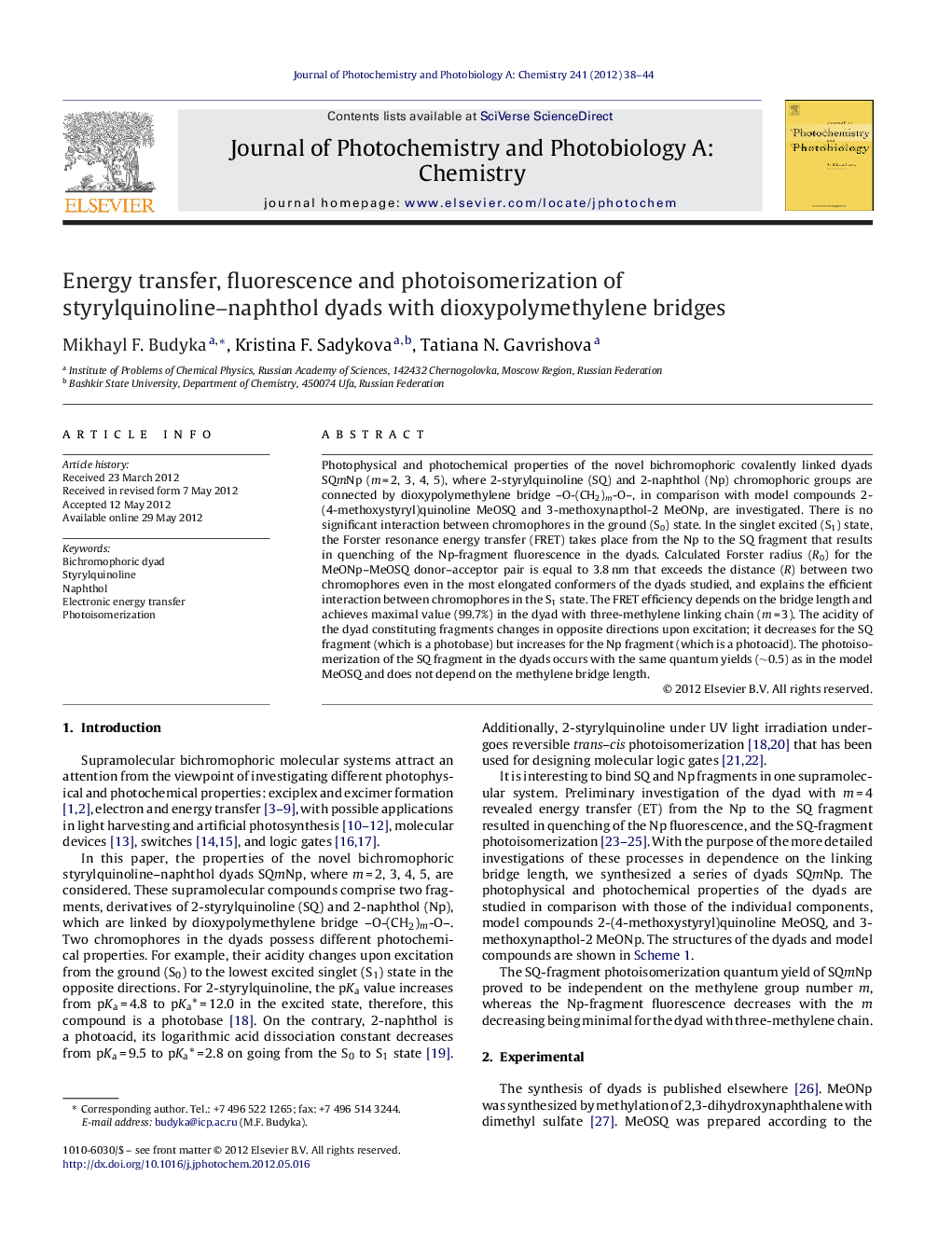| کد مقاله | کد نشریه | سال انتشار | مقاله انگلیسی | نسخه تمام متن |
|---|---|---|---|---|
| 26956 | 43989 | 2012 | 7 صفحه PDF | دانلود رایگان |

Photophysical and photochemical properties of the novel bichromophoric covalently linked dyads SQmNp (m = 2, 3, 4, 5), where 2-styrylquinoline (SQ) and 2-naphthol (Np) chromophoric groups are connected by dioxypolymethylene bridge –O-(CH2)m-O–, in comparison with model compounds 2-(4-methoxystyryl)quinoline MeOSQ and 3-methoxynapthol-2 MeONp, are investigated. There is no significant interaction between chromophores in the ground (S0) state. In the singlet excited (S1) state, the Forster resonance energy transfer (FRET) takes place from the Np to the SQ fragment that results in quenching of the Np-fragment fluorescence in the dyads. Calculated Forster radius (R0) for the MeONp–MeOSQ donor–acceptor pair is equal to 3.8 nm that exceeds the distance (R) between two chromophores even in the most elongated conformers of the dyads studied, and explains the efficient interaction between chromophores in the S1 state. The FRET efficiency depends on the bridge length and achieves maximal value (99.7%) in the dyad with three-methylene linking chain (m = 3). The acidity of the dyad constituting fragments changes in opposite directions upon excitation; it decreases for the SQ fragment (which is a photobase) but increases for the Np fragment (which is a photoacid). The photoisomerization of the SQ fragment in the dyads occurs with the same quantum yields (∼0.5) as in the model MeOSQ and does not depend on the methylene bridge length.
Figure optionsDownload as PowerPoint slideHighlights
► The fragments of 2-styrylquinoline (SQ) and 2-naphthol (Np) in bichromophoric dyads SQmNp do not interact in the ground (S0) state.
► In the singlet excited (S1) state, the Forster resonance energy transfer (FRET) takes place from the Np to the SQ fragment.
► The FRET efficiency depends on the bridge length and achieves maximal value (99.7%) in the dyad with three-methylene linking chain (m = 3).
► The SQ fragment photoisomerization quantum yield does not depend on the methylene bridge length.
► In the dyads, the SQ fragment is a photobase, and the Np fragment is a photoacid.
Journal: Journal of Photochemistry and Photobiology A: Chemistry - Volume 241, 1 August 2012, Pages 38–44